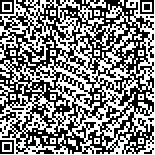赵殿兰,王强,孟萍萍,李展菲,张子青.强化神经肌肉电刺激对脑卒中吞咽障碍患者吞咽功能及舌骨喉复合体运动速度的影响[J].中华物理医学与康复杂志,2017,39(6):427-432
扫码阅读全文

|
| 强化神经肌肉电刺激对脑卒中吞咽障碍患者吞咽功能及舌骨喉复合体运动速度的影响 |
| Effects of neuromuscular electrical stimulation on swallowing and the velocity of hyolaryngeal excursion in post-stroke dysphagia |
| |
| DOI: |
| 中文关键词: 神经肌肉电刺激 吞咽障碍 舌骨喉复合体运动速度 视频透视吞咽检查 渗透-误吸量表 |
| 英文关键词: Neuromuscular electrical stimulation Dysphagia Penetration-aspiration scale Videofluoroscopy Stroke |
| 基金项目: |
|
| 摘要点击次数: 5335 |
| 全文下载次数: 7022 |
| 中文摘要: |
| 目的 观察不同强度的神经肌肉电刺激(NMES)对脑卒中后吞咽障碍患者吞咽功能及舌骨喉复合体运动速度的影响。 方法 将30例咽期吞咽功能障碍患者按随机数字表法分为对照组、NMES组和强化NMES组。3组患者均给予常规吞咽功能训练,NMES组和强化NMES组在此基础上辅以NMES,NMES组每日1次,强化NMES组每日2次。治疗前、治疗2周及4周后进行视频透视吞咽检查(VFSS),测量吞咽半流质食物时舌骨、甲状软骨向前、向上的运动幅度、时间,计算相应的速度,同时采用洼田饮水试验、才藤分级、Rosenbek渗透-误吸量表(PAS)进行疗效评定。 结果 治疗后,3组患者洼田饮水试验、才藤分级、PAS分级均较治疗前明显改善(P<0.05);治疗2周后,强化NMES组洼田饮水试验显效率高于对照组(P<0.05);治疗2周、4周后,强化NMES组才藤分级有效率高于对照组;治疗2周、4周后,强化NMES组PAS分级较NMES组、对照组均明显提高,差异具有统计学意义(P<0.05)。舌骨前移速度中,强化NMES组在治疗2周后[(20.52±8.39)mm/s]、4周后[(33.00±19.83)mm/s]较NMES组及对照组增快;PAS分级与舌骨前移速度Pearson相关性分析呈中度相关(P<0.05)。 结论 强化NMES在改善吞咽障碍患者吞咽功能方面优于NMES,舌骨喉复合体运动速度增快可明显改善吞咽障碍的治疗效果。 |
| 英文摘要: |
| Objective To observe the effect of neuromuscular electrical stimulation (NMES) at different intensities on functional swallowing and the velocity of hyolaryngeal excursion in post-stroke dysphagia. Methods Thirty stroke survivors with dysphagia were randomly divided into a control group, an NMES group and an intensive NMES group, each of 10. All 3 groups received conventional swallowing training, while the patients in the NMES group also received NMES at 30~80 Hz in an intensity of ≤25 mA once a day and those in the intensive NMES group received it twice a day. Before, as well as 2 and 4 weeks after the treatment, video fluoroscopy when swallowing pap was used to determine the superior and anterior excursion distances of the hyoid and larynx and the excursion′s duration and the corresponding velocity. A water drinking test (WDT) was also administered, and dysphagia severity scale (DSS) and penetration-aspiration scale (PAS) ratings were assessed. Results After the treatment, significant improvement was observed in the average WDT, DSS and PAS scores of all three groups compared to before the treatment. The average WDT score of the intensive NMES group was significantly better than that of the control group after 2 weeks of treatment. After 2 and 4 weeks of treatment, the average DSS of the intensive NMES group was significantly better than that of the control group, while the intensive NMES group′s average PAS score was significantly better than those of both of the other groups. The average anterior hyoid excursion velocity of the intensive NMES group was significantly faster than those of the other two groups after both 2 and 4 weeks of treatment. Pearson correlation analysis indicated that the PAS score was significantly correlated with the anterior hyoid excursion velocity. Conclusion Two NMES sessions a day are superior to only one session in improving functional swallowing after stroke. It better promotes quick movement of the body parts involved. |
|
查看全文
查看/发表评论 下载PDF阅读器 |
| 关闭 |